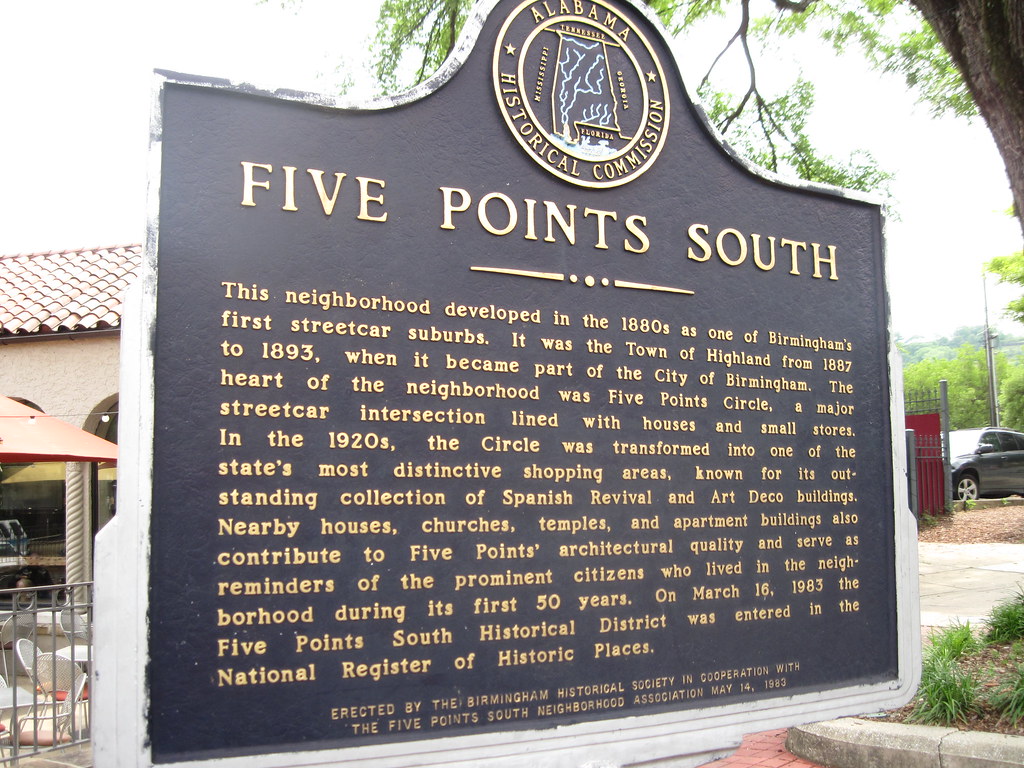The Benefits of Living in Birmingham’s Historic Districts
Introduction
Birmingham is a vibrant, diverse, and unique city with a rich history that is reflected in its many historic districts. From the bustling streets of Five Points South to the tranquil beauty of the Highland Park neighborhood, Birmingham’s historic districts are full of character and charm. Whether you’re looking for a place to call home or just want to explore the city’s historic sites, Birmingham’s historic districts offer something for everyone.
With a variety of housing options, restaurants, and entertainment venues, these districts are sure to provide an unforgettable experience. From the lively atmosphere of the Southside to the quaint, tree-lined streets of Avondale, Birmingham’s historic districts are full of life and culture. Whether you’re looking for a place to live or just want to explore the city’s past, Birmingham’s historic districts are sure to provide an unforgettable experience.
Exploring Birmingham’s Historic Districts
Birmingham is home to some of the most vibrant neighborhoods in the country, and its historic districts are no exception. From the unique architecture of Southside to the cultural heritage of Five Points South, these areas are full of life and character. Whether you’re looking for a place to call home or just a weekend getaway, Birmingham’s historic districts are the perfect place to explore.
The architecture of Birmingham’s historic districts is one of the most remarkable features of the city. From the grandeur of the Victorian-style homes in Five Points South to the classic brick buildings of Southside, each district has its own unique style and charm. In addition to the stunning architecture, the neighborhoods are filled with cultural heritage. From the local musicians and artists of Avondale to the renowned restaurants of Pepper Place, each district has something special to offer.
Living in Birmingham’s historic districts is an experience like no other. From the beautiful architecture to the vibrant neighborhoods, these areas are full of life and culture. Whether you’re looking for a place to call home or just a weekend getaway, Birmingham’s historic districts are the perfect place to explore.
The Benefits of Living in Birmingham’s Historic Districts
Living in Birmingham’s historic districts can be an experience like no other. With its beautiful architecture, convenient amenities, and vibrant culture, Birmingham’s historic districts offer a unique and desirable lifestyle.
The architecture of Birmingham’s historic districts is one of the area’s most notable features. From the grand Victorian homes of Five Points South to the Craftsman bungalows of Norwood, these neighborhoods are filled with character and charm. With a variety of architectural styles, there is something for everyone in Birmingham’s historic districts.
In addition to the architecture, living in Birmingham’s historic districts offers many conveniences. From restaurants and shops to parks and recreation, there is something for everyone. With easy access to public transportation, you can get to where you need to go with ease.
The culture of Birmingham’s historic districts is vibrant and alive. With a variety of festivals, events, and activities, there is always something to do. From exploring the galleries and museums to attending the annual jazz festival, you can experience the city’s culture in all its glory.
Finally, living in Birmingham’s historic districts provides a sense of community. With neighbors who share your interests and values, you can build relationships and create a sense of belonging. From block parties to neighborhood watch groups, there are plenty of opportunities to get involved and make a difference.
Living in Birmingham’s historic districts provides a unique and desirable lifestyle. With its beautiful architecture, convenient amenities, and vibrant culture, it is easy to see why so many people choose to call these neighborhoods home.
Types of Historic Buildings in Birmingham
Birmingham is a city steeped in history and culture, with many of its most iconic buildings dating back centuries. From the neoclassical architecture of the Birmingham Museum of Art to the ornate Victorian-style homes of Five Points South, Birmingham’s historic districts offer a unique glimpse into the past. In addition to the stunning architecture, these areas offer a variety of amenities that make them ideal places to live.
The architecture in Birmingham’s historic districts is truly unique, with styles ranging from neoclassical to Victorian. Whether you’re looking for a grand mansion with ornate details or a cozy bungalow with a porch, there’s something to suit every taste.
Plus, many of these homes are within walking distance of restaurants, shops, and other amenities, making it easy to enjoy the best of city living. With all these unique features, it’s no wonder why so many people choose to call Birmingham’s historic districts home.
Preserving Birmingham’s Unique Historic Architecture
Birmingham is home to some of the most unique and beautiful historic architecture in the country. From the iconic Vulcan statue to the stunning churches of the Civil Rights District, Birmingham’s historic districts are a testament to the city’s rich cultural heritage. Living in these districts offers a unique opportunity to appreciate the city’s history firsthand and to be part of a vibrant and diverse community.
Not only do these historic districts provide a unique living experience, they also contribute to the city’s economic development. By preserving the city’s historic architecture, Birmingham is able to attract new businesses and visitors, creating jobs and stimulating the local economy. Moreover, these districts create a sense of place and identity that can help to attract new residents and businesses to the city.
Living in Birmingham’s historic districts is not only a great way to be part of the city’s vibrant culture, but it can also be an investment in the city’s future. By preserving the city’s unique architectural heritage, we can ensure that Birmingham remains a vibrant and prosperous city for generations to come.
The Impact of Historic District Regulations on Home Values
Birmingham’s Historic Districts are some of the most sought-after neighborhoods in the city. With their unique character, stunning architecture, and vibrant culture, these districts are a great place to call home. But the real benefit of living in a Historic District is the impact it can have on your property values.
Historic Districts are regulated by the city to preserve their unique character and curb appeal. This means that homes in these districts must adhere to certain standards when it comes to renovations and new construction. While this may seem like a hassle, the regulations actually lead to higher property values. With the assurance that the unique character of the district will be maintained, buyers are more likely to invest in homes in Historic Districts. This helps ensure that the homes retain their value, and in many cases, even increase in value over time.
Conclusion
Living in Birmingham’s historic districts has many benefits, from the preservation of unique architecture to an increase in home values. Exploring the city’s various districts can be a fun and rewarding experience, allowing residents to gain a better understanding of the city’s history and culture. Historic district regulations ensure that the city’s unique architecture is preserved and can even lead to an increase in home values.
With so many advantages, it’s no wonder why so many people choose to make Birmingham’s historic districts their home. By investing in these areas, residents can help to ensure that Birmingham’s unique history and culture are preserved for generations to come.
Frequently Asked Questions
Q1: What is the definition of a historic district in Birmingham?
A1: A historic district is a geographically defined area with a concentration of buildings, structures, or sites that are significant to the history and culture of Birmingham. These districts are protected from alterations or demolition that would adversely affect their character or value.
Q2: What types of buildings are found in Birmingham’s historic districts?
A2: Birmingham’s historic districts are home to a variety of building types, including residential, commercial, industrial, and public structures. Examples of residential buildings include historic mansions and row houses, while commercial buildings may include former department stores and industrial buildings may include former factories.
Q3: What are the benefits of living in Birmingham’s historic districts?
A3: Living in Birmingham’s historic districts can provide residents with a unique living experience. Historic districts often feature unique architecture, a sense of community, and access to a variety of amenities. Additionally, living in a historic district may also provide residents with access to local businesses and attractions that are not available in other parts of the city.
Q4: How is Birmingham’s unique historic architecture preserved?
A4: Birmingham has taken several steps to preserve its unique historic architecture. The city has established regulations that protect historic buildings from alterations or demolition that would adversely affect their character or value. Additionally, the city has also established a Historic Preservation Commission which is responsible for overseeing the preservation of the city’s historic resources.
Q5: What impact do historic district regulations have on home values?
A5: Historic district regulations can have a positive impact on home values in Birmingham. The regulations help to ensure that the unique character of the historic districts is preserved, which in turn can help to increase home values. Additionally, the regulations can also help to protect the value of homes by preventing large-scale development projects that could potentially reduce property values.
Q6: What is the process for applying for historic district designation?
A6: The process for applying for historic district designation in Birmingham begins with submitting an application to the Historic Preservation Commission. The application must include detailed information about the proposed district, including its boundaries, the types of buildings it contains, and its historical significance. Once the application is submitted, the commission will review the application and make a final determination as to the district’s eligibility.


